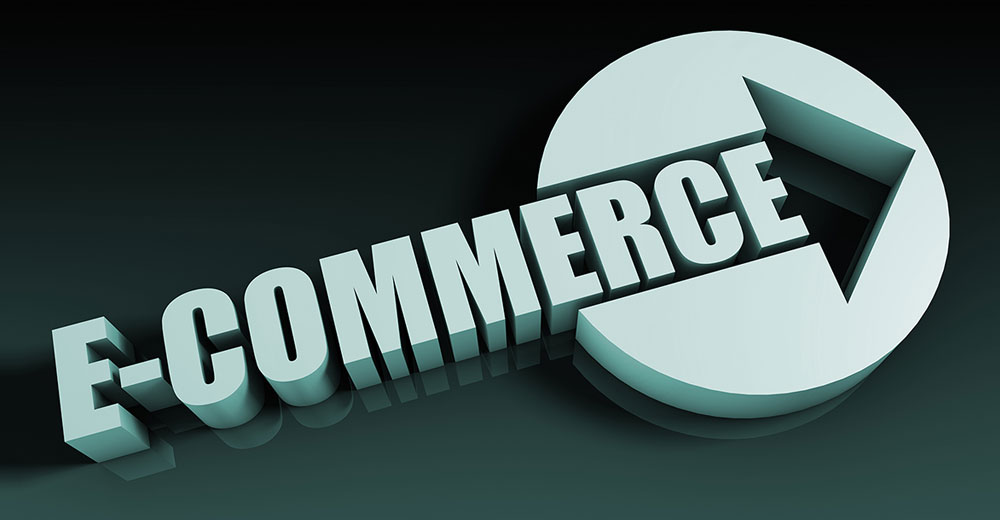E-commerce companies must surmount a variety of unique challenges to grow.
At any given time, companies may encounter a desperate need to spruce up the look and feel of their website and mobile app, boost their digital storage capacity, or optimize the way they process transactions so that customers can make purchases on different online platforms seamlessly.
They also may face concerns shared by traditional brick-and-mortar firms — for example, restocking supplies or inventory, adding employees, and managing payroll and other expenses.
Capital tends to be the solution for most challenges facing e-commerce companies. If capital is in short supply, as is often the case with emerging businesses, it’s natural to look to financing as a viable means to bridge the gap.
Qualifying for a business loan from a traditional lender isn’t always an option, especially for small and mid-size e-commerce firms that may not have built up a solid track record of profitability. Fortunately, alternative lending companies offer a clearer path to financing.
One of the major drivers in the rapid expansion of the financial technology sector in the last decade, alternative lenders can empower e-commerce businesses to succeed by helping them overcome various financial hurdles.
Technology Meets Financing
The advent of alternative lending stems from a timely combination of technological advances and a dire need for financing.
Conventional lenders reduced capital available to businesses significantly in the years that followed the Great Recession of the late 2000s and early 2010s. At the same time, a new breed of lenders began to emerge to fill in the gap. Online lending pioneers typically functioned as marketplaces that brought together investors with capital to lend and individuals in need of financing.
Businesses continue to rely on them today for many reasons, not the least of which is the closure of many community lenders following the financial crisis.
Another pain point solved by alternative lenders is helping business owners who seek out financing from a conventional lender but don’t receive the full amount. More than half of small businesses that applied for a loan of US$250,000 or less last year received less than what they asked for, according to the Federal Reserve.
Alternative lending companies have capitalized on the gaps in financing left by conventional lenders in recent years, one reason the market for alternative lending is now worth roughly $1 trillion, according to research firm CB Insights.
Traditional lenders have started to get in on the act, funding some loans through alternative online lending platforms. That’s good news for budding e-commerce businesses.
As more companies enter the alternative lending space, we’re beginning to see more niche options, such as platforms that cater specifically to merchants by lending them money based on their incoming sales revenue.
Meanwhile, advances in artificial intelligence and machine learning promise to speed up how alternative lenders crunch data to help refine and accelerate the turnaround time between the evaluation of a loan application and its funding.
A More Accessible Lifeline
Online lending companies differ from traditional lenders in key ways that make it more likely for businesses to qualify for financing.
While some of these companies work with traditional lenders to fund loans, many get funding from investors. That allows them to use a broader range of criteria to determine a borrower’s creditworthiness than a traditional lender can use.
It’s no surprise, then, that a growing number of U.S. small businesses have been turning to online lending companies to get the capital they need to grow. Alternative lenders fielded some 32 percent of all business loan applications last year, up from 24 percent in the previous year, according to data from the Federal Reserve.
Types of Financing Available
The types of financing available increased as more companies entered the alternative lending business.
Most online lenders now offer a mix of business loan programs. There’s the standard fixed interest rate loan that gives borrowers anywhere from three to five years to pay it off. Businesses also can opt for a line of credit, which gives them a specific amount they can draw upon as needed, essentially functioning like a credit card.
Lenders offer loans to finance capital spending on certain big-ticket purchases, like trucks or computers, which then serve as collateral to ensure repayment. Businesses may opt for a short-term loan that effectively enables them to borrow against their projected revenue, a practice known as “invoice financing.”
There are other differences between traditional and alternative lenders. A traditional lender will weigh at least one or two years of a company’s cash flow history, while alternative lenders may need to look over as little as three months’ worth of bank transactions.
Alternative lenders also will look beyond a business owner’s personal credit history when sizing up creditworthiness and focus instead on the company’s monthly revenue track record.
The application process for an alternative loan tends to be far less onerous and lengthy.
Getting approved for a business loan from a conventional lender, especially if it’s backed by the Small Business Administration, typically requires businesses to have a good credit score, put up collateral, and present a business plan. They also may have to provide tax returns and other financial records.
The typical reasons small businesses are denied loans from a conventional lender are low credit scores, not enough collateral, insufficient credit history, weak business performance, and too much debt, according to the Federal Reserve.
Consider that alternative lending companies typically need to view nothing more than financial statements and will accept average credit scores. They’re also more likely than traditional lenders to make smaller loans, and their online application process tends to be quicker and easier.
Support for Growing Sales
Tapping alternative avenues of financing can be helpful for online-based businesses in particular, given the bevy of challenges they face.
Take a small or mid-sized online retailer that’s growing so quickly that its existing warehouse and distribution space is becoming increasingly unmanageable and inefficient.
The company needs more capacity to scale, and that means a bigger space. Here’s where a business owner with constrained cash flow and credit might decide to manage for a while longer in the same space, with the situation becoming a roadblock to growth.
The solution is an infusion of capital to cover the search for and lease of a new, more modern warehouse that can accommodate the business’ expansion, as well as the costs to relocate equipment and inventory.
With a line of credit or a standard term loan of a specific amount at a fixed interest rate, the company can upgrade its warehouse space — perhaps ahead of the crucial holiday shopping season, for instance.
E-commerce sales as a percentage of total retail sales are projected to climb to 14 percent by the end of 2021, up from 9.8 percent at the end of last year, according to research from equity analysts at BTIG.
That’s a welcome forecast if you’re an online retailer, but let’s say your portal sells apparel and accessories. Are you in a position to make the most of the next big sales holiday or fashion trend? Strong demand becomes a problem when you don’t have the cash to restock your inventory or spend on marketing content to help drive sales.
It isn’t just online retailers who can leverage financing through an alternative lender to take their business to the next level.
Support for Technology Needs
E-commerce businesses rely on technology more than most to draw in customers, keep them engaged, and handle their purchases with ease. If your website runs slowly because you haven’t been able to afford faster Internet hosting, or if it hasn’t been set up to integrate with a mobile device display, visitors could be turned off.
A sluggish, poorly updated website can frustrate customers and cost you a few sales on a regular day. However, if not having enough bandwidth causes your site to be knocked offline during a surge in traffic on Cyber Monday, one of the busiest shopping days of the year, that could deal a severe blow to your business’ growth prospects.
You also could be stunting your company’s growth if your e-commerce business isn’t optimized for mobile devices because you haven’t been able to afford an app developer.
Alternative lenders can help e-commerce companies manage the costs of upgrading their technology without upending their cash flow management.
Support for Marketing and Data Analysis
Marketing is another key strategy component for driving e-commerce company growth. Beyond investing in advertising and managing social media accounts to enhance your company’s visibility, one facet of marketing that can help your company grow is data analysis.
Large e-commerce companies use data in all sorts of ways. Smaller e-commerce companies can benefit from pinpointing the best way to reach the type of consumer who would be most inclined to become a repeat customer.
Gaining that knowledge can require hiring a data analyst or enlisting the services of a firm that handles that sort of work. A loan from an online lender could be just what your company needs to pinpoint your best customers.
Is Applying for Credit Online Right for Your E-Commerce Business?
Not convinced? Operating debt-free is an ideal that businesses often can’t live up to as they grow and their day-to-day cash needs increase.
What you don’t want to do is let your e-commerce company lose momentum because your cash flow isn’t allowing you to take care of the essential and profit-building investments it needs to remain competitive.
Don’t settle for traditional financing options. You have more alternatives than ever.














































Social Media
See all Social Media